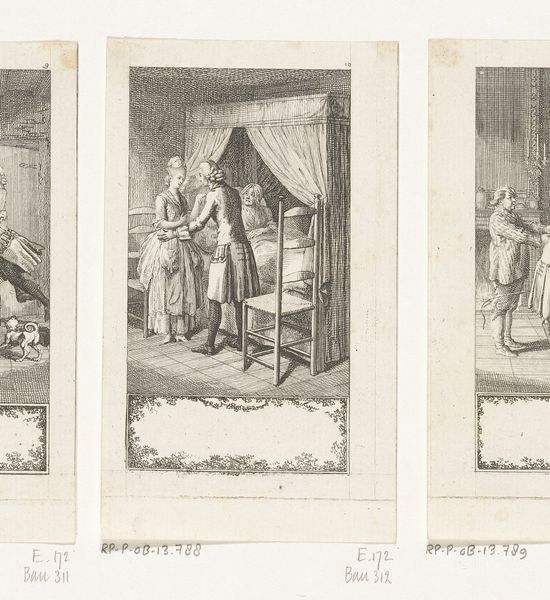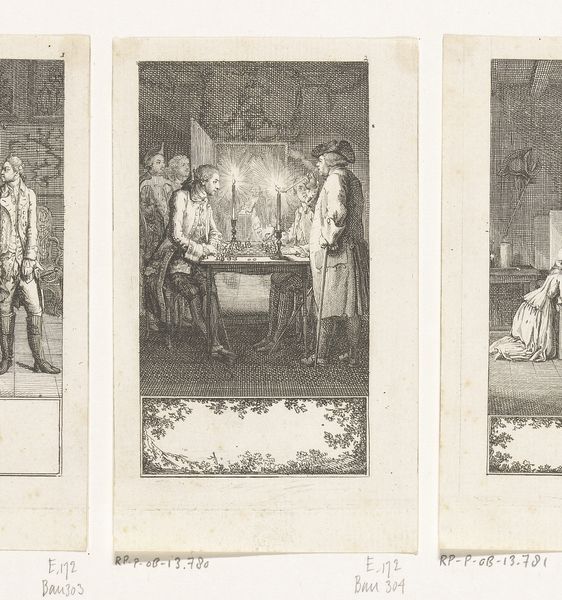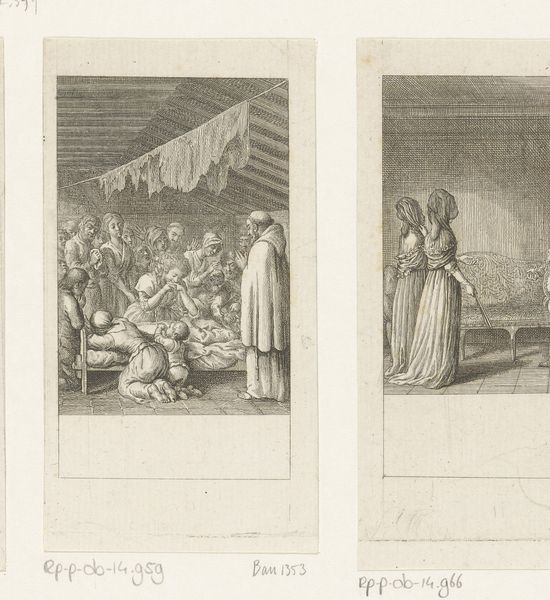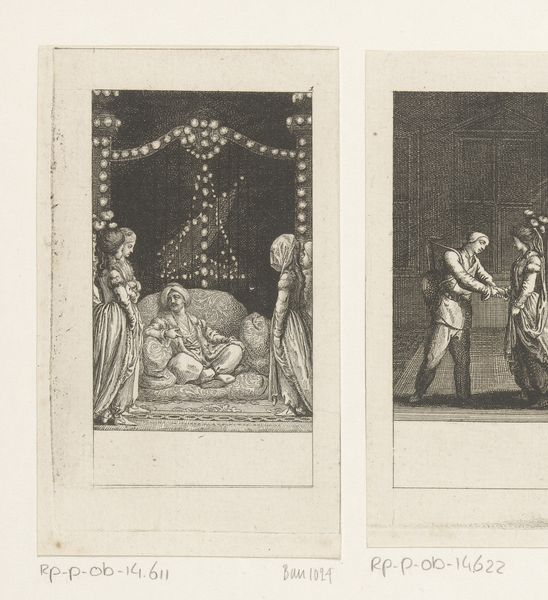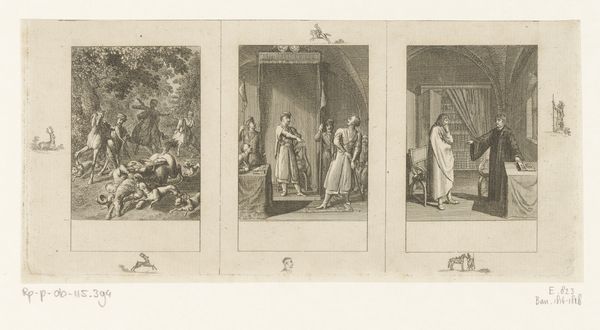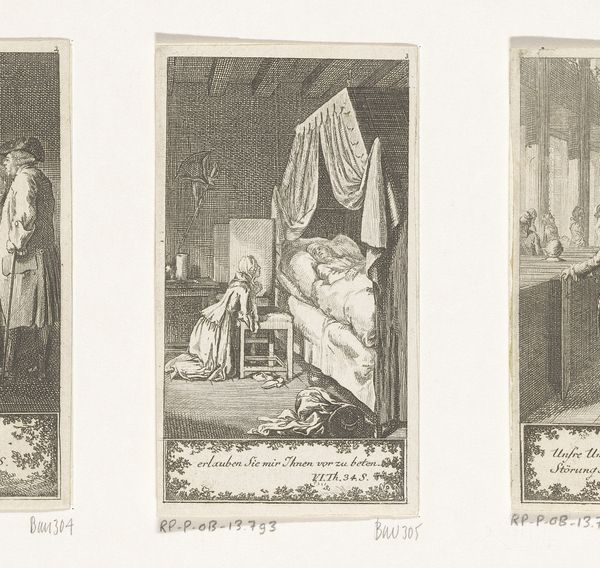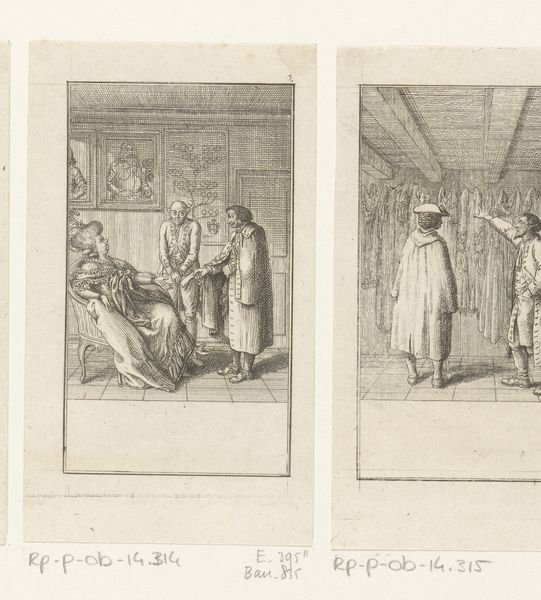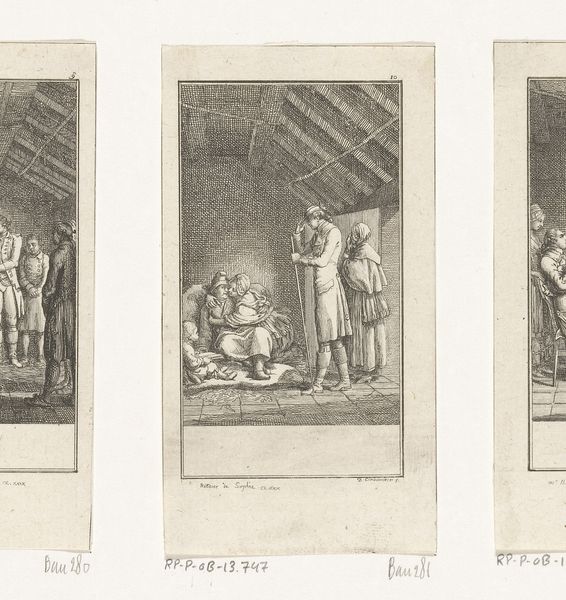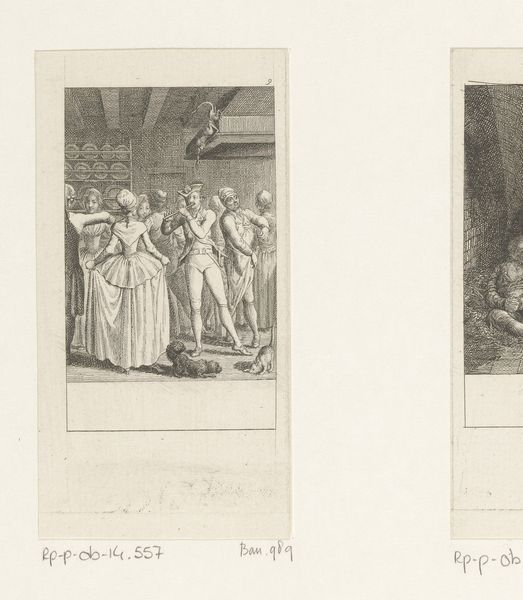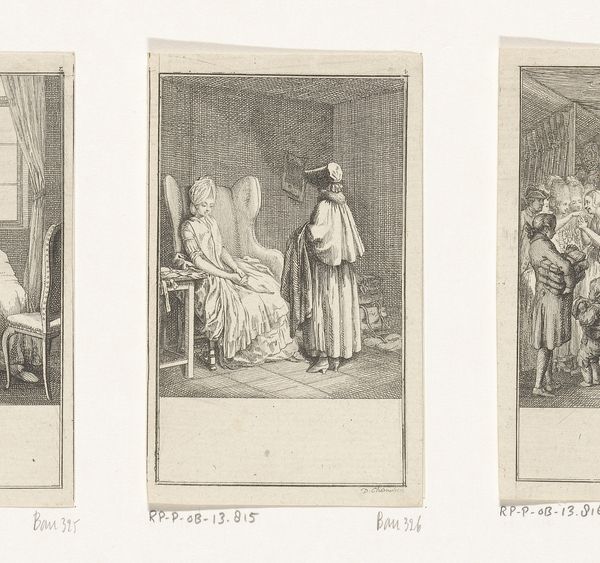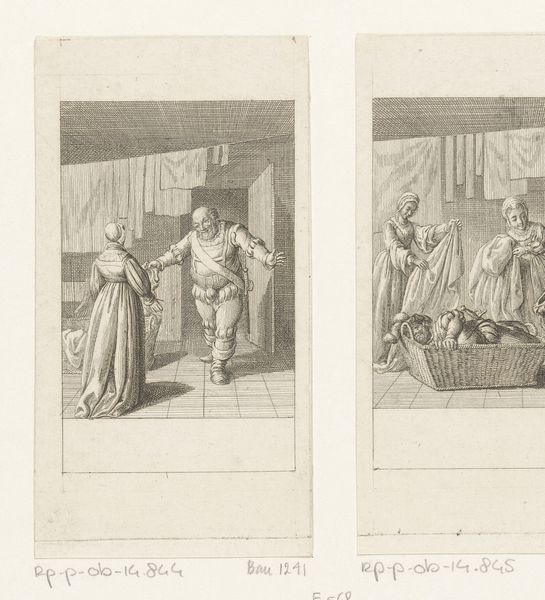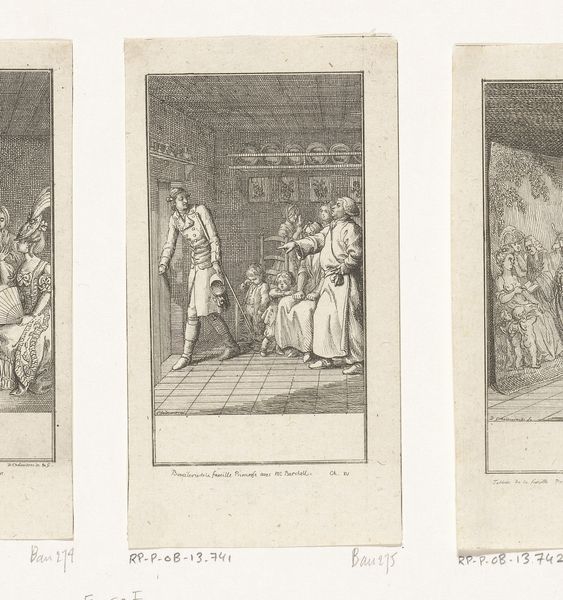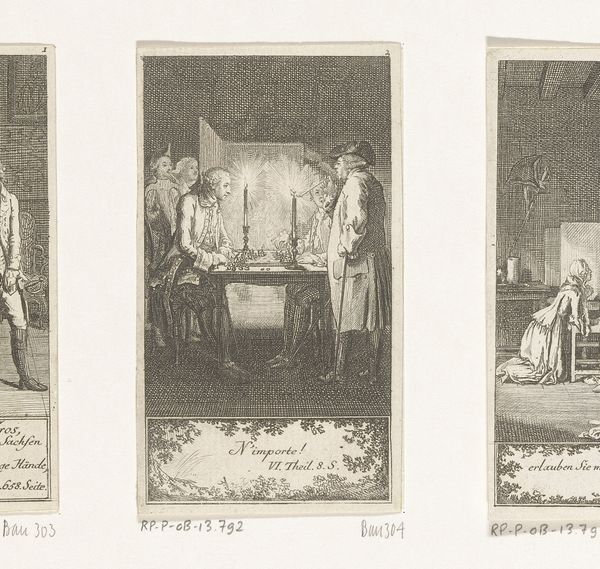
Dimensions: height 110 mm, width 65 mm
Copyright: Rijks Museum: Open Domain
This tiny engraving, *Feind is Ziek,* was made by Daniel Nikolaus Chodowiecki in the late 1700s. The image is created through etching, a printmaking technique using acid to cut lines into a metal plate, which is then inked and pressed onto paper. Think about the labor involved: Chodowiecki would have needed skill as a draughtsman, a knowledge of chemistry, and the physical strength to operate the printing press. The fine, delicate lines that define the scene—a woman kneeling in prayer beside a sickbed—speak to the precision and control required. Etching was a repeatable medium, which made images like this accessible to a wider public, part of the burgeoning print culture of the Enlightenment. Though small in scale, the print hints at larger social issues. The vulnerability of the sick person, the piety of the caregiver—these themes resonated with a society undergoing immense transformation. Appreciating the artistry and the mode of production allows us to consider the print's broader cultural significance.
Comments
No comments
Be the first to comment and join the conversation on the ultimate creative platform.
